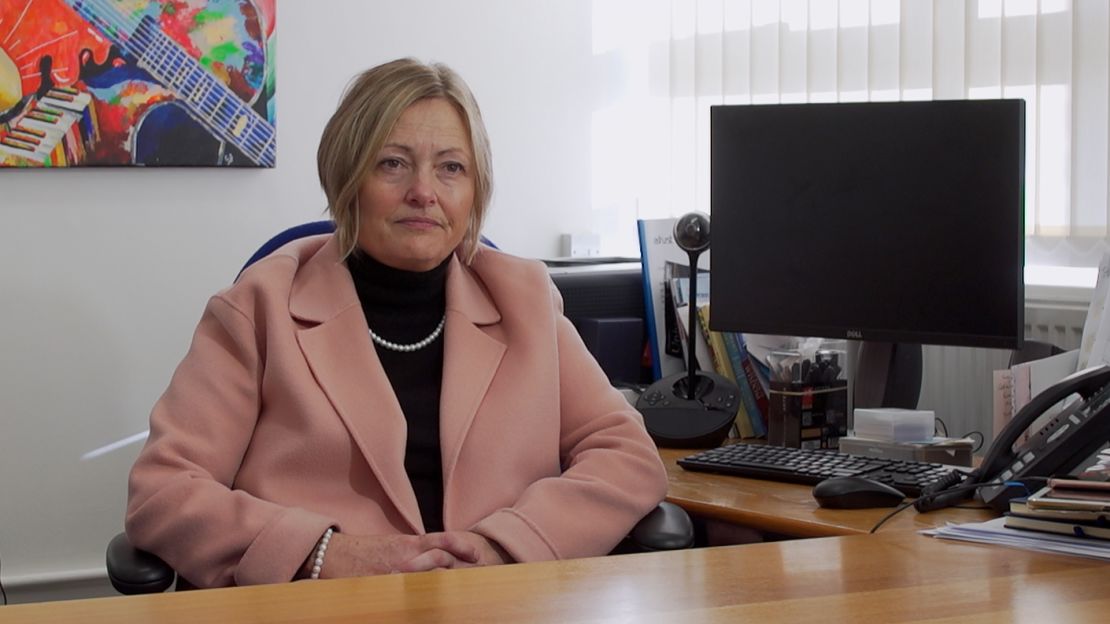Ella is now working from home.
She joins many around the world, fellow Brits – and her parents – in succumbing to safety over normalcy. She is 12 years old, a high school student in south London.

“When I was in Year Seven and the first lockdown came, we were like, ‘Oh my gosh, this is so good! We don’t have to go to school!’” she said from her dining room, via Zoom. “And now I’m just like, ‘Oh please let me go back to school.’”
As in much of Europe, the British government has made face-to-face learning a priority in the pandemic. Apart from the first lockdown in spring 2020, it had managed to keep schools open through the autumn. That was done, despite, at times, shutting all non-essential retail and restaurants and telling people to stay at home unless absolutely necessary.
When CNN visited Ella’s school before the December holiday break, we saw the measures used to keep teachers and children safe. Masks were mandatory outside the classroom. Each class was a bubble, able to be sent home as a group if anyone tested positive. And the school administration devoted significant resources to trace possible cases.
Sudden changes
For weeks leading up to the New Year, despite surging coronavirus cases and a new highly contagious variant, Prime Minister Boris Johnson’s government assured schools and parents that children would return to the classroom in January.
On the morning of January 4, as children streamed into schools and he toured a hospital, Johnson touted “the efforts that we’re making as a government to try to keep primary schools open.”
Just hours later, he executed an about-face of acrobatic proportions. In a somber prime-time address to the nation, the Prime Minister said that he was ordering the closure, from the next day, of not just secondary schools – which serve children 11 and above and are where spread is more likely – but also primary, or elementary schools.

“It was inevitable,” Julia Waters, head teacher of Ella’s Ursuline High School, told CNN. “Obviously they hadn’t listened to head teachers’ voices.”
Indeed, the government’s official scientific advisory panel concluded before Christmas that it was “highly unlikely” that the government could get a handle on the new highly contagious variant of coronavirus that has ripped through England as long as schools remained open.
Waters agrees there is no true substitute for face-to-face learning, but said she was furious with the government’s lack of decisiveness. She wants her teachers vaccinated before they return to the classroom.
And yet, as England remains in strict lockdown, it is still Johnson’s goal to open schools “as soon as possible,” he told a parliamentary committee on Wednesday.
He has support in that goal from Amanda Spielman, the chief regulator for schools in England, who told CNN last month that remote learning is “nothing like the same as actual schooling.”
“It’s not just children with obvious disadvantage markers or children who don’t have laptops or good internet access at home,” she said. “There are real problems with motivation. There are real problems for younger children trying to learn through screens. We can see effects across the board.”
Research shows children’s cases follow adult infections
Scientists now agree that while children are much less susceptible to illness from the coronavirus, they can spread it. But research conducted during England’s last lockdown in November, suggests that schools do not play a big role in amplifying outbreaks – they simply reflect the contagion already present in their community.

“When you look at the data, what you do see is that there is a lag in school-age children compared to adults,” Shamez Ladhani, the lead author of preliminary research published in the Lancet medical journal in December, told CNN regarding new coronavirus infections.
“When adult rates start going up, children’s rates start going up. And during the lockdown, when adult rates came down, it took a week, but children’s rates started going down as well. So, there is a very close correlation.”
The spread of coronavirus in England is now worse than it has ever been during the pandemic. Policymakers and scientists alike are grasping for any tool in their kit to reduce interaction. But when the contagion stabilizes, as they hope, schools may be the first to benefit.
CNN’s Max Foster contributed to this story.





